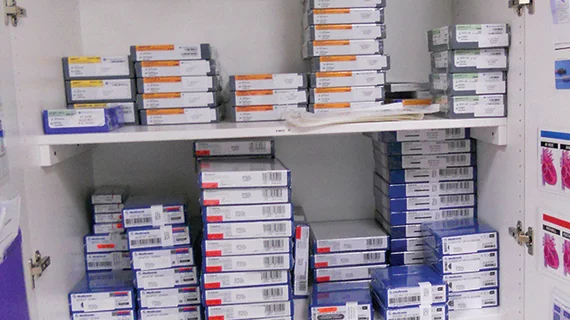Reduce, reuse, recycle: How cath labs can lower cardiology’s colossal carbon footprint
Cardiac catheterization labs, much like radiology suites and operating rooms, are leading contributors to the world’s growing carbon footprint due to the significant amount of medical waste they create.
According to a new analysis in EuroIntervention,[1] cardiologists and other cardiology professionals can help address this environmental concern by following three familiar rules: reduce, reuse and recycle.
“The number of cardiac procedures worldwide is increasing, with expanding medical facilities to cater for a growing population,” wrote Haitham Amin, MD, a cardiologist with Mohammed Bin Khalifa Bin Salman Al Khalifa Specialist Cardiac Center in Bahrain, and colleagues. “Scarce attention has been given to quantifying and reducing waste from cardiac cath labs and cardiac operating theatres (COTs) to help lower the carbon footprint.”
Amin et al. noted that cath labs typically send a massive amount of waste to landfills, including contaminated waste and packaging from interventional devices such as catheters and stents. Complex percutaneous coronary intervention (PCI) procedures, for example, result in a large amount of waste; structural heart interventions and coronary artery bypass graft surgeries result in even more.
“The amount of cardiac procedure-related waste in our daily practice can be extrapolated to all cardiac cath lab and COT procedures performed globally (roughly 5 million cardiac cath lab procedures, including 250,000 transcatheter aortic valve replacements and 1.3 million COT procedures annually),” the authors wrote. “This indicates that an enormous amount of waste is produced worldwide, of which a sizeable amount is potentially recyclable.”
The group emphasized that the global healthcare sector “ranks as the fifth largest emitting entity on the planet” in terms of greenhouse gas emissions, with the United States, China and Europe leading the way. How can the world’s cardiac cath labs make a difference? Amin and colleagues shard three recommendations:
1. Reduce waste by removing non-essential items from procedural kits, improving inventory management and avoiding “water and paper wastefulness.” In addition, replace diagnostic angiography with CT angiography for ischemia when possible.
2. Reuse items such as metal instruments and plastic bowls when safely possible. (Sterile single-use items are not to be reused, the group wrote.)
3. Recycle all uncontaminated paper, plastic and cardboard. “There needs to be a streamlined segregation of this recyclable waste and an appropriate waste management strategy that diverts these materials away from landfills,” they authors wrote.
The group concluded by calling for more research into this topic and recommending healthcare providers consider a “sustainability team” that can prioritize new ways to help limit the large carbon footprint associated with cardiology and other specialties.
The full study is available in EuroIntervention, a journal from EuroPCR and the European Association of Percutaneous Cardiovascular Interventions.

